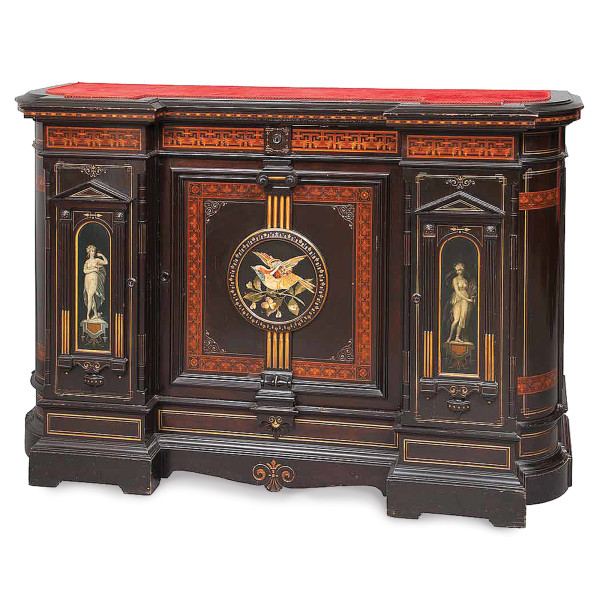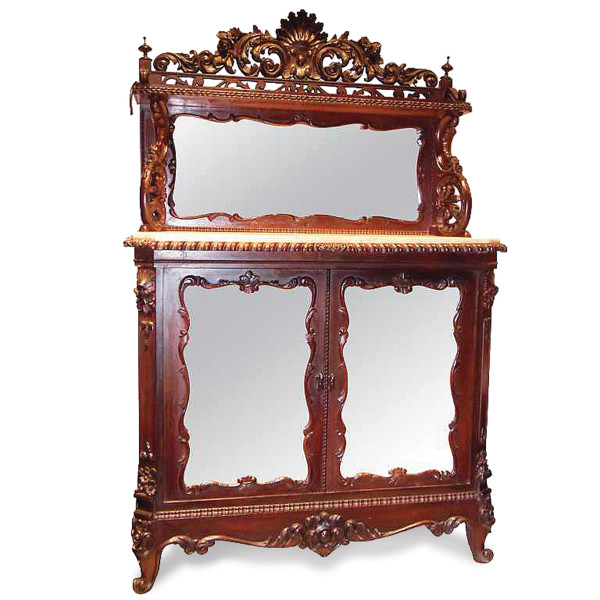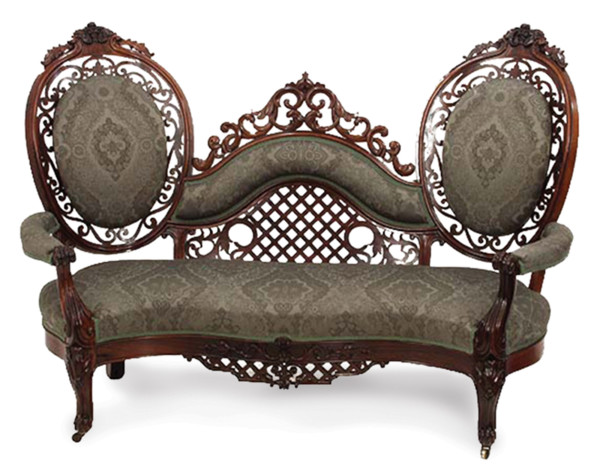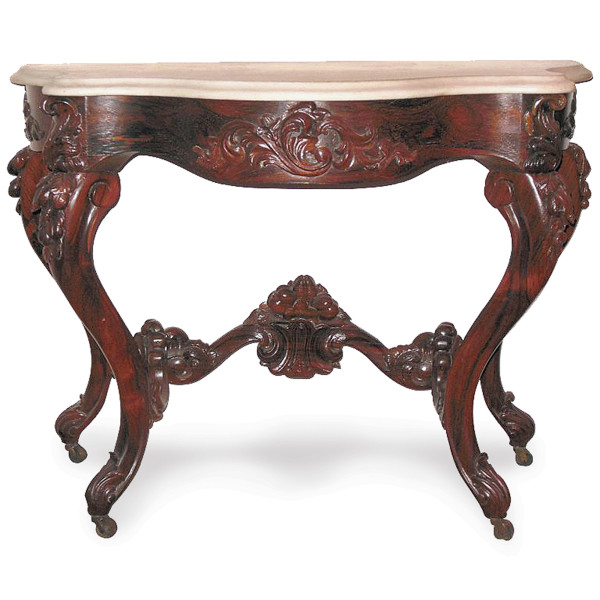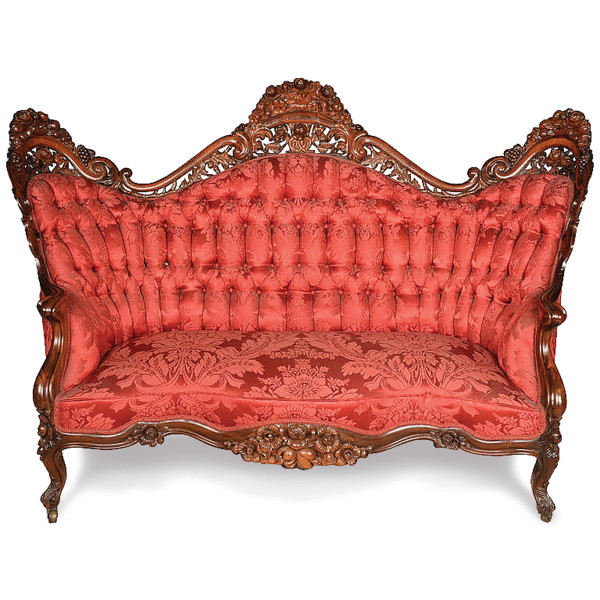The Victorian period lasted a long time—Queen Victoria was the English monarch from 1837 to 1901—and comprises many different styles of architecture and decoration. Still, when they hear the word Victorian, many people think of the carved furniture and heavily embellished rooms of the mid-19th century—a time when the Rococo and Renaissance Revivals were in full sway.
A serpentine recamier or “fainting couch,” ca. 1870, is upholstered in period-appropriate, button-tufted peacock-blue silk. An ebonized Renaissance Revival pedestal with Neo-Grec accents, by Kimbel and Cabus, is highlighted with bronze plaques and gilded incising. (collection of Ian Burke) Courtesy SFO Airport Museum Originating in France, what came to be known as Rococo Revival was inspired by the gilded elegance of Louis XIV and Louis XV styles. Ornate and exuberant, celebrating nature with floral and botanical motifs—and a cavorting cherub or two—Victorian Rococo stands in contrast to the spare neoclassicism of the Greek Revival houses and Empire furniture that preceded it. By the 1850s, the Rococo Revival had become synonymous with the carved furniture of John Henry Belter. Belter (1804–1864) was a German immigrant who opened a cabinet shop in New York City in 1833. He patented processes for laminating paper-thin sheets of brittle rosewood with glue, steaming and pressing them into three-dimensional moulds that then were carved in fine detail. This allowed for strong furniture that still could be mass-produced. The laminated sheets were resistant to breakage, yet pliable enough to be intricately ornamented. Carved flowers and fruits embellish a ca. 1860, laminated and carved, Rococo Revival American parlor chair with needlepoint upholstery. souhantq.com Although his furniture was frequently copied by such competitors such as Alexander Roux, Joseph Meeks, and Mitchell & Rammelsberg, Belter’s work is considered the finest of the period. He typically used six or more layers of rosewood (his competitors used three to six), and his carvings are finer. Belter furniture rarely comes on the market today and, unlike many antiques, has retained its value. A single chair in a rare, complex pattern may bring $20,000 or more. By the late 1860s, after the Civil War had ended and wealth had begun to build again, Renaissance Revival style had become the fashionable alternative to Rococo. It took cues from the baronial palaces of classical Italy; these large-scale pieces were not so frivolous or flowery. Based on rectangular, geometric forms, Renaissance Revival furniture was machine-made and mass-produced, but then embellished with gilded and polychromed cutouts and elegant, incised decorations. Many talented shops produced Renaissance Revival furniture: Jelliff, Brooks, Pabst, Kimbel and Cabus, Pottier & Stymus, and Hunzinger are well known. But it was Gustave and Christian Herter who produced the finest and most elaborate work. One of the first decorating firms to open after the Civil War, Herter Brothers operated from 1864 to 1906. Associated with early and mid-Victorian French architectural styles, Rococo is a baroque style with heavy carvings and rounded shapes. Rob Leanna The firm custom-designed everything, from wall and ceiling treatments, drapery and portieres, to elaborate furniture. Prominent clients included the Grant White House, William Henry Vanderbilt, J. Pierpont Morgan, and Jay Gould. Herter Brothers furniture today is highly sought-after, priced from $5,000 for a side chair to $50,000-plus for a rare cabinet. The Herter Brothers also produced furniture in Neo-Grec style and, famously, in the later Aesthetic Movement style. Embellished but more delicate than Rococo, the immensely popular, neoclassical style was in vogue from the 1850s through the 1880s. Rob Leanna Victorian Rococo and Renaissance furniture overlapped in popularity during the 1860s through the 1870s. Rococo was French and florid; the more geometric Renaissance style had Italian roots. Side cabinet by Herter Brothers. A very rare American Renaissance Revival inlaid and ebonized side cabinet by Herter Brothers, ca. 1870, is decorated with a pietra dura plaque and side panels painted en grisaille. doyle.com Marble-top rosewood cabinet. A Victorian Rococo Revival marble-top rosewood cabinet with a pierced fretwork crest is attributed to J. & J.W. Meeks of New York. joanbogart.com An American Rococo rosewood love seat. An American Rococo rosewood love seat, ca. 1860, makes a statement with elaborate, pierced floral carving. souhantq.com Rococo Revival console table. The Rococo Revival console table with a marble top is another John Henry Belter antique. joanbogart.com A John Henry Belter ‘Fountain Elms’-pattern rosewood love seat. A John Henry Belter ‘Fountain Elms’-pattern rosewood love seat is upholstered in a Scalamandre silk damask. joanbogart.com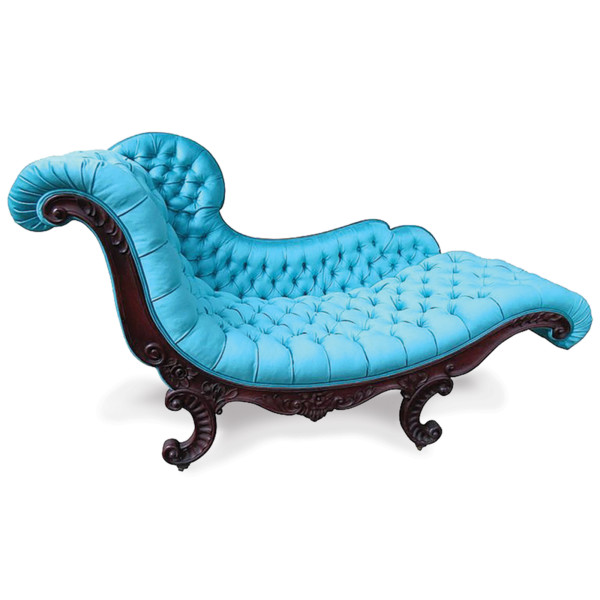
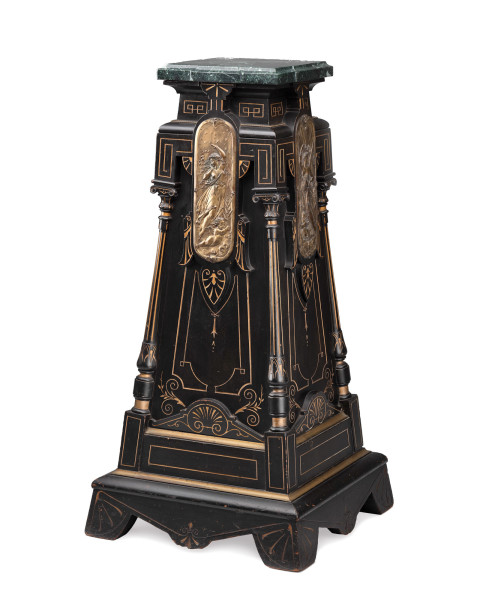
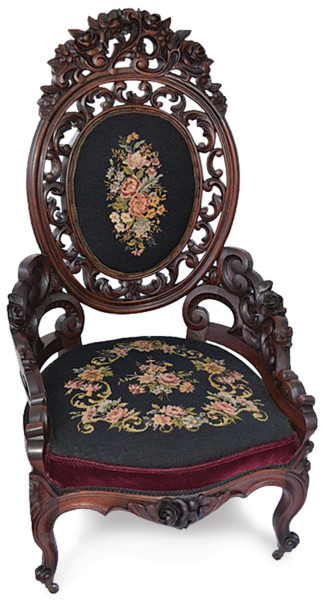
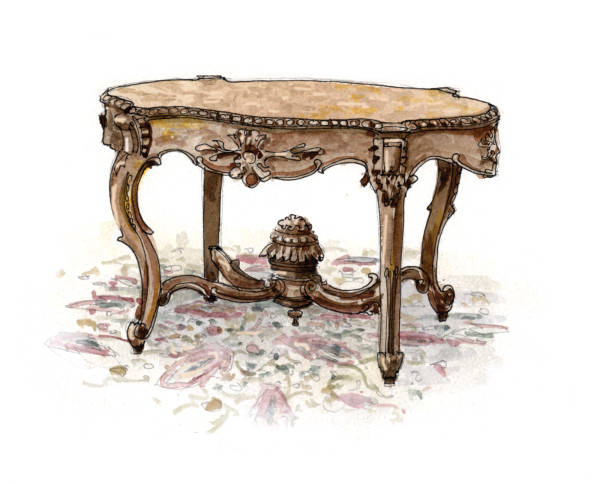
Rococo Revival Furniture
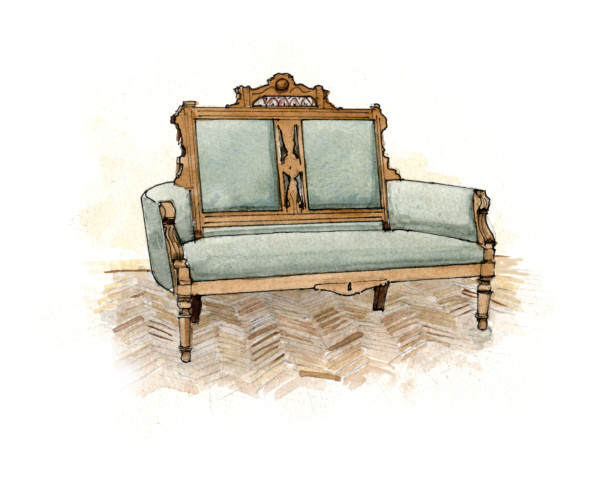
Renaissance Revival Furniture
